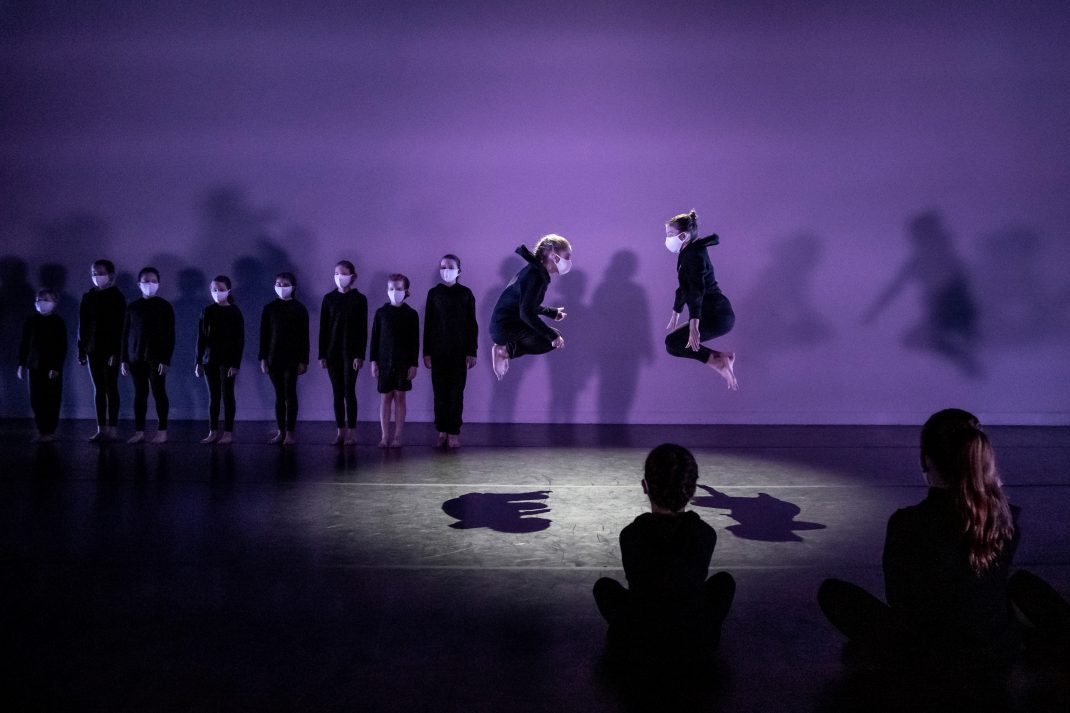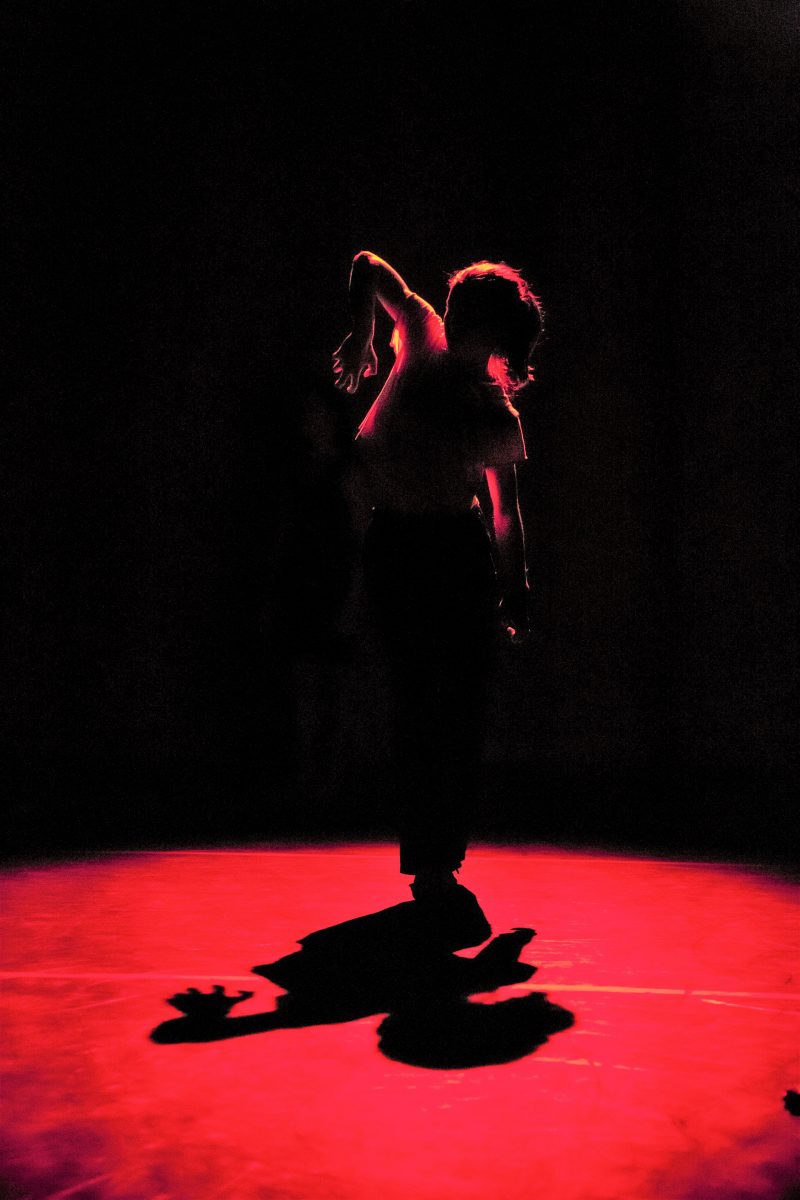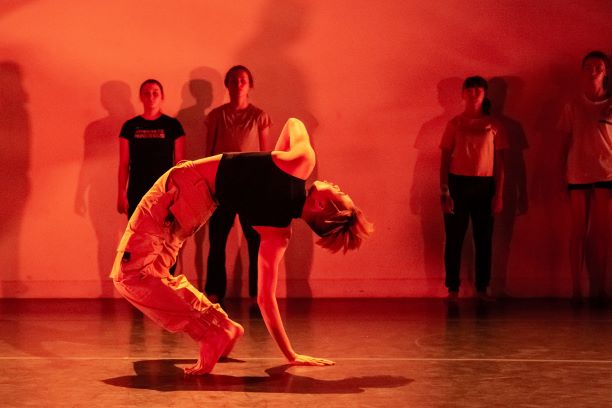15 October 2020, Canberra College Theatre
As a result of the COVID 19 situation, two of the annual initiatives of Canberra’s youth dance organisation, QL2 Dance—the Quantum Leap program for senior performers and the Chaos Project for younger dancers— were combined this year, hence the over-arching name Leap into Chaos. The performance also took place in a different, but well resourced venue, and with a much smaller than usual number of people seated for each performance (with physical distancing in place).
The younger dancers gave us a multi-faceted work called Touch. In seven parts, with choreography by Ruth Osborne, Steve Gow, Alison Plevey, Olivia Fyfe and Ryan Stone, Touch showed a range of different reactions to the coronavirus pandemic. There were masks, worn and then taken off with a shout of pleasure; references to hand washing; social interaction; acts of kindness; finding one’s place in the world; and a closing section filled with the joy of being able to perform live again.

While I wish one or two sections had been a little shorter, as ever I was impressed with the ability of the Chaos dancers to enter and exit the stage so smoothly and to use the space of the stage so effectively. Apart from the development of creativity during the choreographic phase when the dancers have the opportunity to contribute ideas, the value of the Chaos Project has always been the development of an understanding of stagecraft. The young dancers always do themselves proud in this respect.
********************************
The second half of the program was an outstanding work, Sympathetic Monsters, choreographed by QL2 alumnus Jack Ziesing to a soundscape by Adam Ventoura. Ziesing is currently working freelance as a dancer and choreographer and, in creating Sympathetic Monsters, was inspired by a book by Shaun Tan called The Arrival. The impact of Sympathetic Monsters sent me in search of some information about The Arrival, which it turns out is a wordless book, a migrant story told using a series of images only. Tan himself says it concerns in part ‘the “problem” of belonging’, which ‘especially rises to the surface when things go wrong with our usual lives.’
I loved looking at Ziesing’s work without knowing anything about Tan’s book. His choreography alternated between group movement, exceptionally well performed by the dancers, and solos in which dancers pushed their bodies into fantastically twisted shapes. In its structure the work was endlessly fascinating. The dancers mostly entered one by one to perform a solo. After finishing, they moved upstage and stood in a line across the back of the stage space until they engaged in a group section. At the very end, the group, acting as involved onlookers, encircled two performers who moved together in a kind of complex duet. The work was lit by Craig Dear of Sidestage and his pronounced use of shadowy effects added to the drama of the movement and the power and mystery of the work.

But reading about The Arrival further opened up the work, if in retrospect. There it all was in movement—the isolation; the belonging or not belonging; the group versus the individual; the sympathy juxtaposed with its opposite. Many thoughts came crowding in and even the title made some sense. I am looking forward to seeing the work again when QL2 Dance offers it as part of a streamed event later in October. Sympathetic Monsters was an exceptional work.
Michelle Potter, 17 October 2020
Featured image: Scene from Jack Ziesing’s Sympathetic Monsters, QL2 Dance, 2020. Photo: © Lorna Sim
